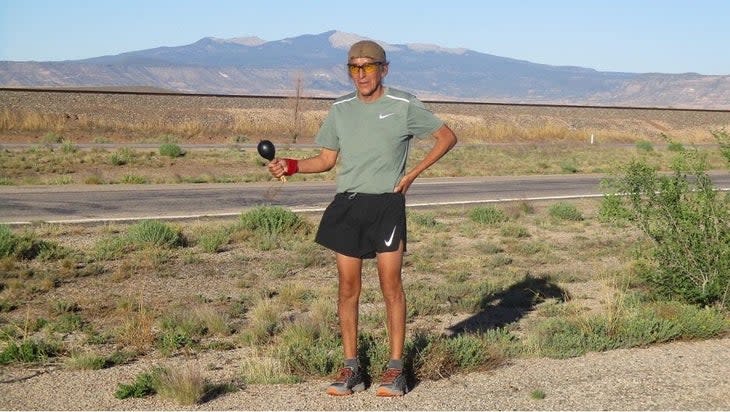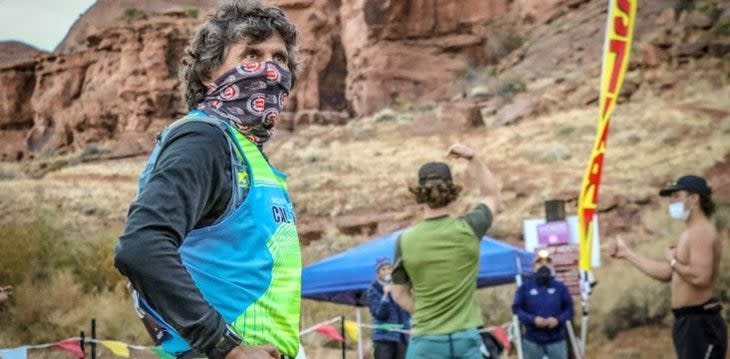Three Masters Athletes on Intersectional Wisdom for Lifelong Running
This article originally appeared on Womens Running
In the global sport of running, a growing number of individuals and groups are actively breaking down racial barriers to the sport, including Native Women Running, Black Trail Runners, and others. Progress in representation can often feel slow and nonlinear, but forward moves have been made in diversity and equity within running spaces.
However, the intersectionality of racial diversity and age is something few people have explored with much depth in running. Intersectionality, by definition, is how overlapping social identities result from unique experiences for each person. Understanding such identities is critical to disentangle the prejudices people face daily. Here, we've connected with notable aging runners, across the racial spectrum, to draw insights into their experiences.
World Records and Beyond
Jeannie Rice, 74, of Naples, Florida, has been running for nearly forty years. Rice was born in South Korea but has lived in the U.S. for more than four decades. "I came to the states from Seoul, Korea, at age 19, and I forget most of the time that I'm Korean," Rice explained.
She began running in 1983, a central part of her life and daily routine. Her running journey spans over 1,000 races, from local 5Ks to marathons. The septuagenarian has now completed 128 marathons (with the Tokyo and Boston Marathons on the books for 2023).
Rice quickly realized her talents for the sport, qualifying for the Boston Marathon in just her second marathon (3:16). Since then, she ran a world record for the 70-74 age division in 3:27:50, at the 2018 Chicago Marathon, and has collected many other world records.
RELATED: Tips From Lifelong Trail Runners on Longevity
Rice is a daily runner and averages 50 miles per week, waking at 4 a.m. to get 20-plus mile runs through downtown Naples. She has been able to maintain her weekly mileage without any overuse injuries. She tacks on lightly-weighted workouts three times a week and golfs whenever she has time.
As a dedicated runner, she's cultivated both physical and mental health. "Running and exercising every day, getting proper sleep daily, and a healthy diet keeps me healthy physically," said Rice. "And 1-2 hours every day away from the housework, computer, phone, and busy life keep me mentally healthy."
Coming from South Korea, Rice has witnessed the evolution of running over the years. "When we were growing up - I am talking about 60 years ago - girls didn't have sporting events, but I was in Korean folk dance classes, and that was it," said Rice.
"I think running is the best sport there is," Rice explained. "You don't need another player or partners like in tennis or racquetball. Just put the running shoes on and go out the door."
Rice's life has been enriched through the running community. "During our runs we talked about training, racing, scheduling race trips, and dieting," she said. "I've met many wonderful runners and made great friends through the running community."
The shared intersectional wisdom from these masters athletes delivers optimism for the future of running, personal health, and running aspirations. Each of their stories shares a common thread, of how running is anchored so seamlessly into their daily schedules. Each of them must keep moving physically to keep moving mentally in a robust manner, because mental well-being follows movement.
Discipline, Motivation, and Determination
Edison Eskeets, 63, of Ganado, Arizona, will be inducted into the North American Indigenous Athletics Hall of Fame in 2023. Eskeets, Navajo, began running while caring for the family's animals at five. Daily running was necessary for survival on their open lands while caring for the sheep, goats, pigs, and horses. His running evolved through schooling, as it was understood that running was more orchestrated into athleticism. Eskeets ran at Yale and trained for the Olympic Games.
"Throughout the years, I have underscored three terminologies: Discipline, Motivation, and Determination," said Eskeets. "These three items are hinged together and became a part of me on my journey." Since then, his running has included a myriad of marathons and ultras.

Although Eskeets has been heavily involved with running, it became necessary to include additional activities to assist with his training as he aged. He has included some weight training, cycling for active recovery, hiking, and chopping wood.
RELATED: Lessons From Five World Class Masters Mountain Runners
As a Native runner, running has deep roots in his Navajo culture. "Native running has always been active for centuries to deliver a message, carry medicine for those in need, seek food and water, hunting games, and scout new living sites," Eskeets explained. "This was prior to the arrival of horses, wagons, and automobiles."
Eskeets has seen Native running continue to evolve alongside Western society. "Throughout the ages, the influx of people, technology, and age of industry," Eskeets explained the change in Native running. "The mainstream society has changed traditional Native running into athleticism. Today, we compete for: schools, best times, trophies, medals, prizes, and personal recognition."
Never Give Up and Finish Strong
Sheldon Subith, 67, of Hemet, California, is Armenian and started running over fifteen years ago to get fit and be healthy enough to play with his grandchildren. Soon after, he spent more time on the trails while participating in several races. Much of his daily fitness is maintained by being a ranch manager.
"It is the main component in my training, especially core work," said Subith. "Plus, it's mentally good to change these up so one doesn't become complacent."
Subith spent many years coaching Native cross-country runners at the Noli Indian School in San Jacinto, California. Many of whom came from challenging living situations and backgrounds. "As a cross-country coach, I would take the kids running on trails," Subith explained. "The trails were great for training, and the kids loved it. My motto as a coach was to 'never give up and finish strong.'"
These days, the accomplished Armenian masters runner keeps moving with his obligations through the Native American Trail Running Organization (NATRO) he created in collaboration with Scott Mills.

Subith grew up next to the Soboba Band of the Luiseno reservation and has a deep reverence for the local tribes and land. Subith developed NATRO to decrease the high rates of diabetes in the Native American population - an effort to give back to the Native community that has done so much for him. "I envision a championship among reservations across the country that would change venues yearly," he said. For Subith, promoting the physical and mental benefits of trail running through various representatives is key to improved inclusion.
Subith wakes at 2 a.m. (yes, 2 a.m.) for his daily runs before work. He invests much of his time to full-body training. Core work is essential to keep the running form from breaking down over time. "Plus, it's mentally good to change these up, so one doesn't become complacent," Subith said. He also attributes his longevity to a regimented diet, natural supplementation, and adequate sleep.
By and large, Subith has had a good experience in the running community as an Armenian runner. "People embrace me knowing I'm Armenian, especially the Native community having genocide in common," he said. "I'm treated with respect, and I reciprocate (it)."
As trail running continues to become more inclusive and supportive, Subith sees nothing but opportunities for Armenians to get more involved. "The only ones stopping Armenians from being inclusive are ourselves," Subith explained. "I see a few Armenians in race results and have met a few at races. It feels good to meet my Armenian brothers while competing."
For exclusive access to all of our fitness, gear, adventure, and travel stories, plus discounts on trips, events, and gear, sign up for Outside+ today.

